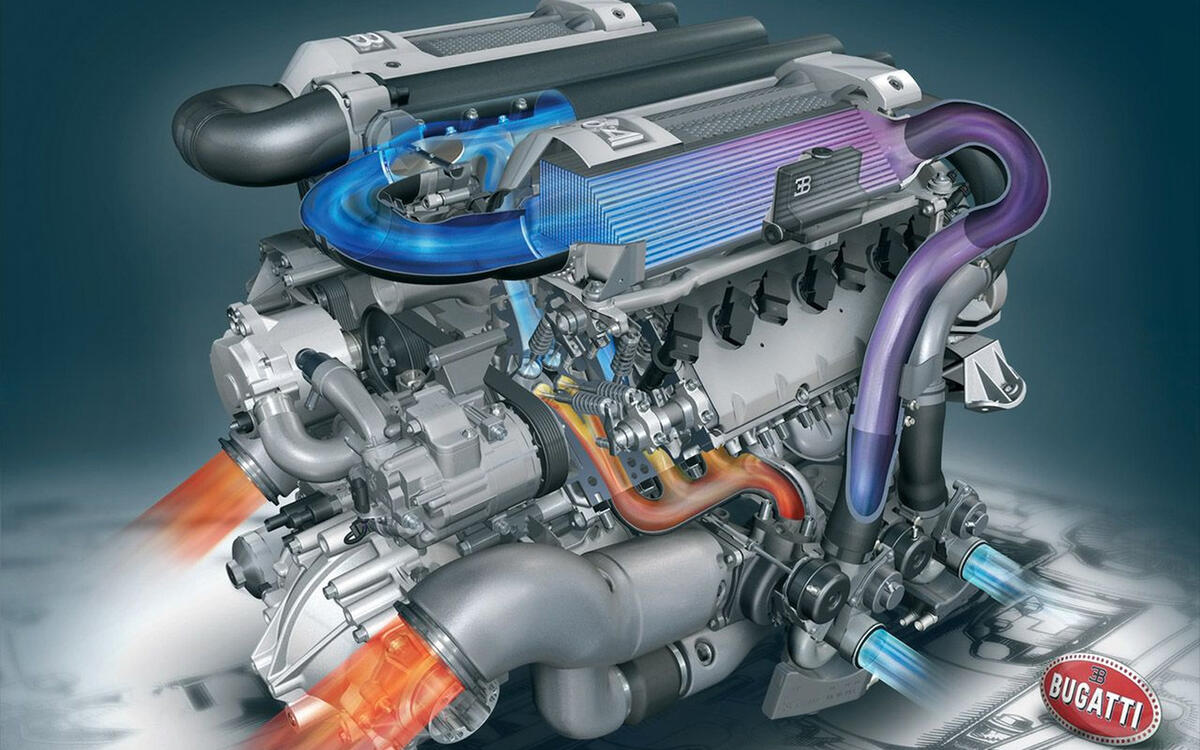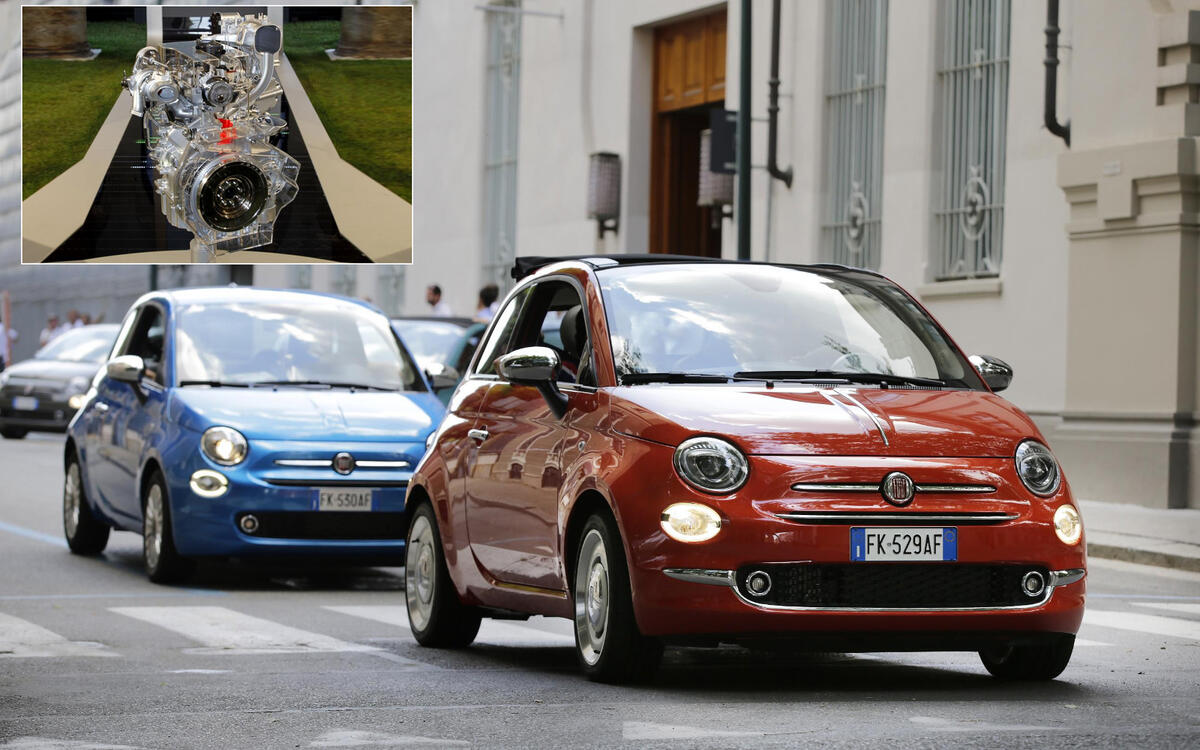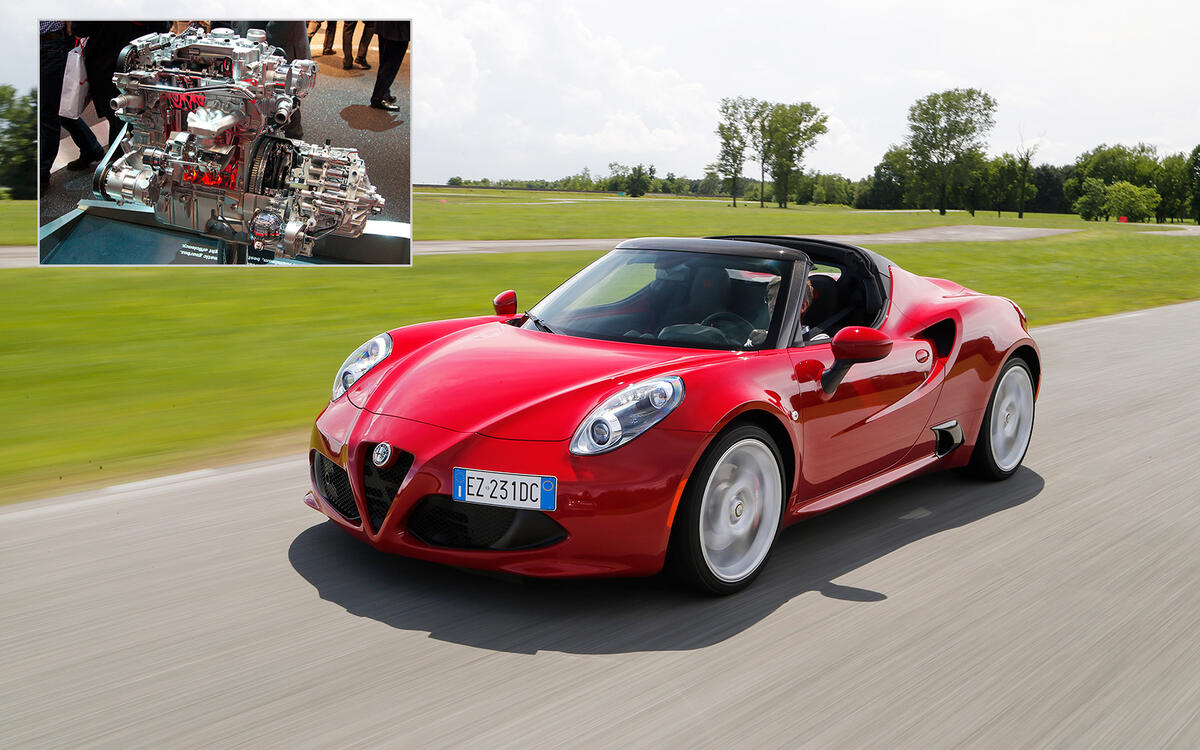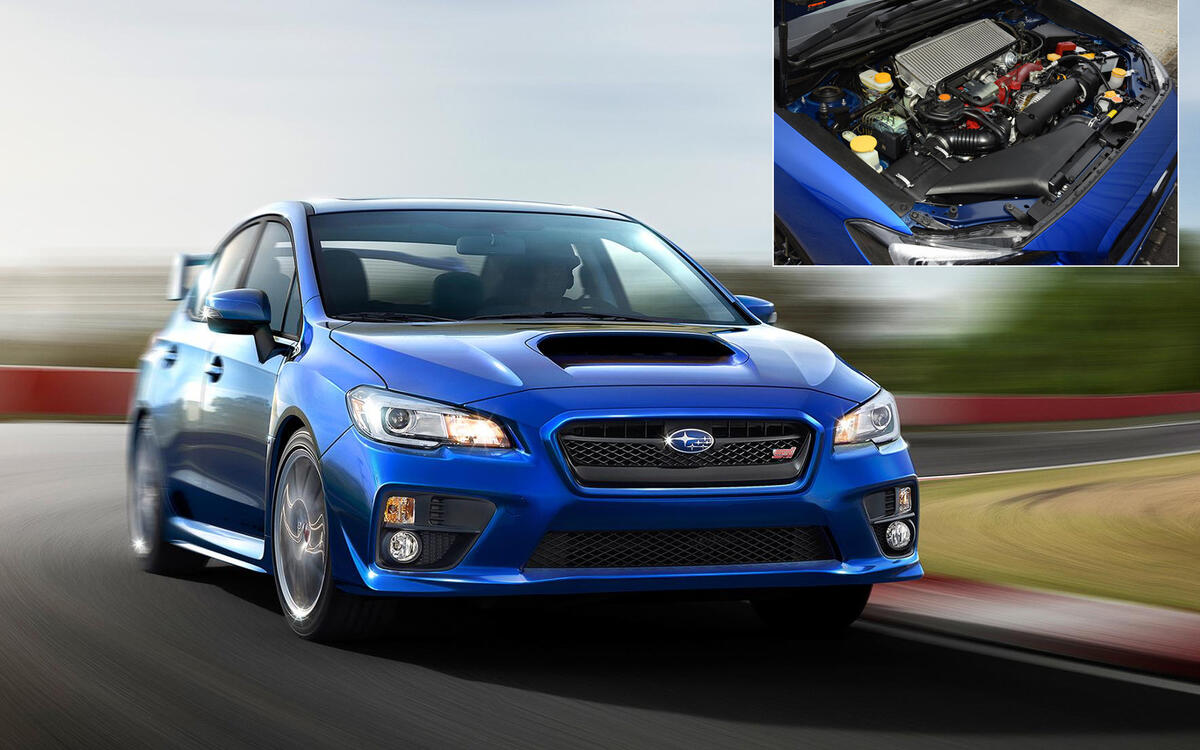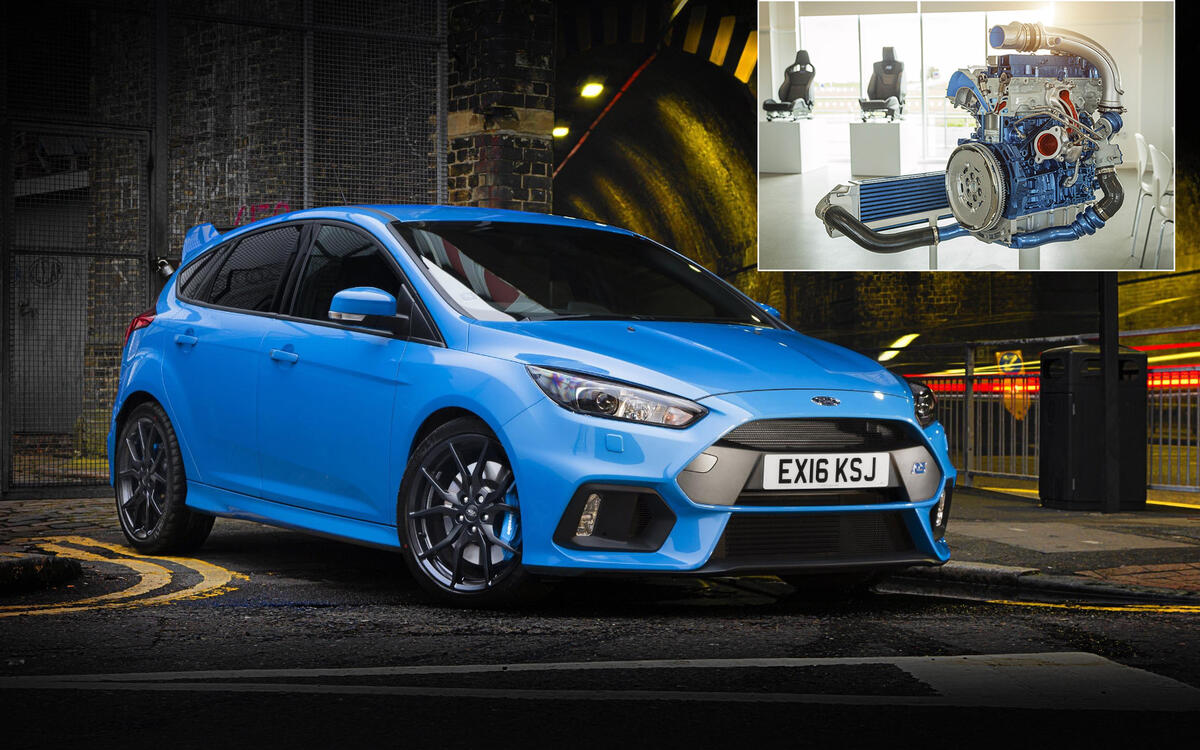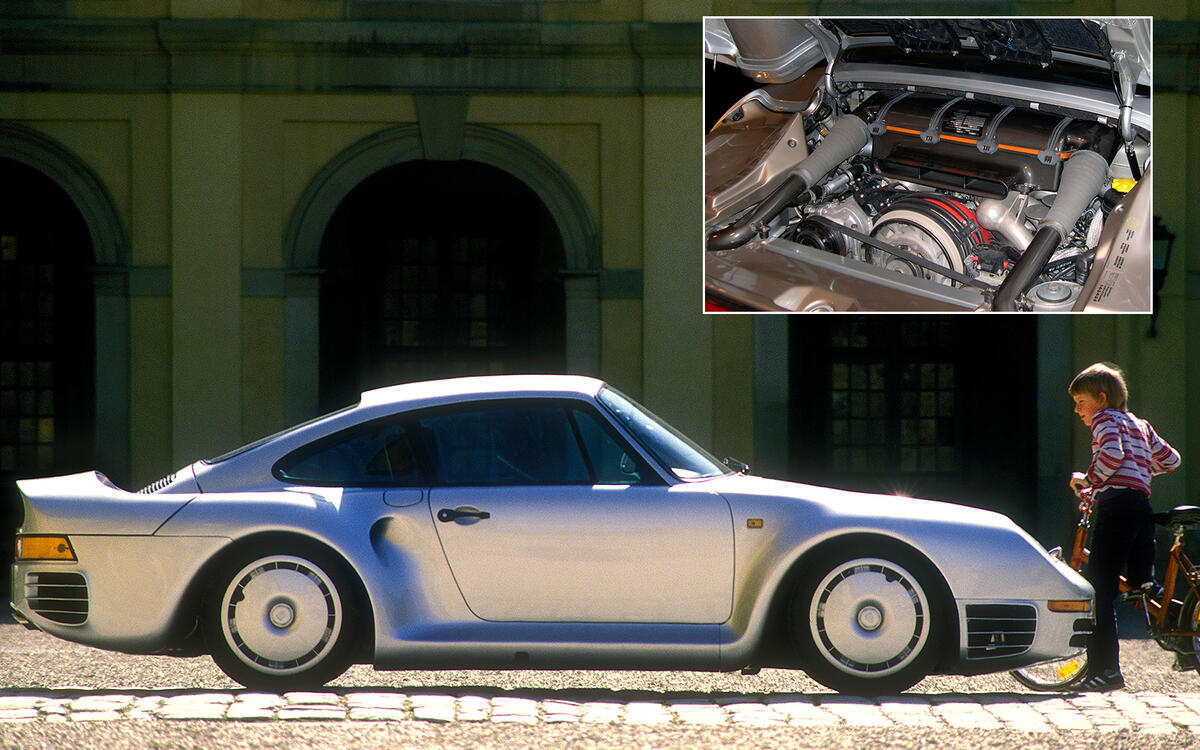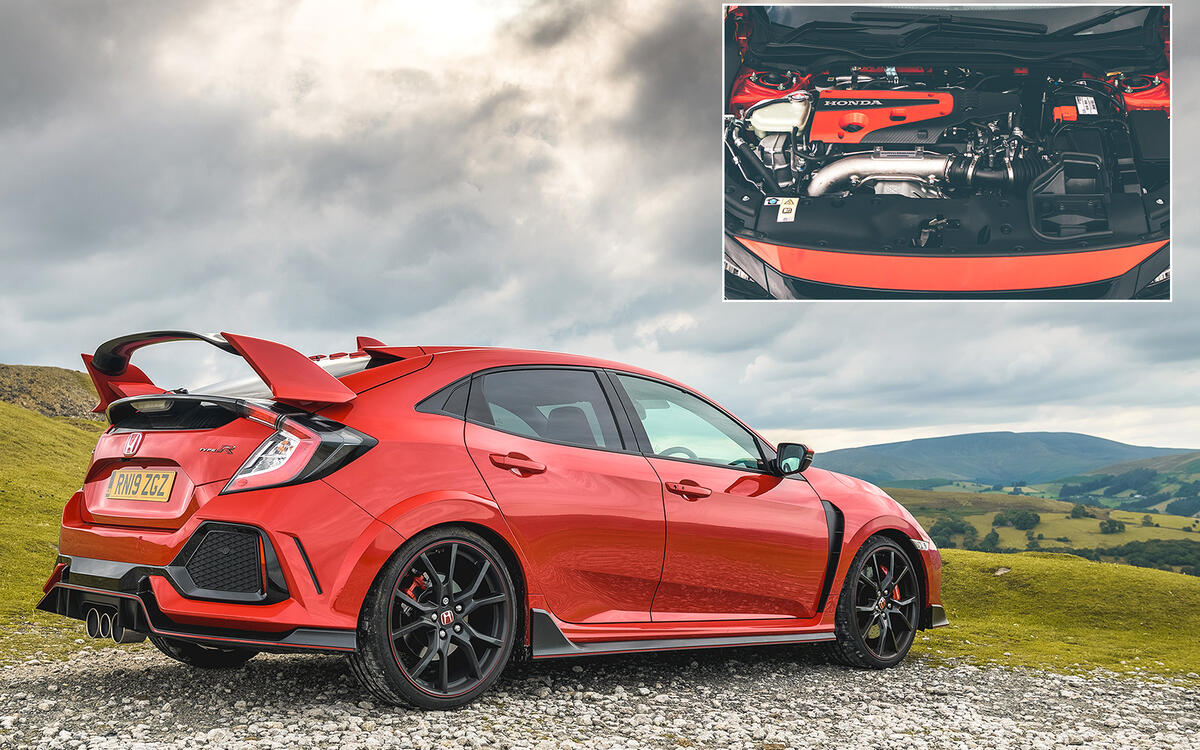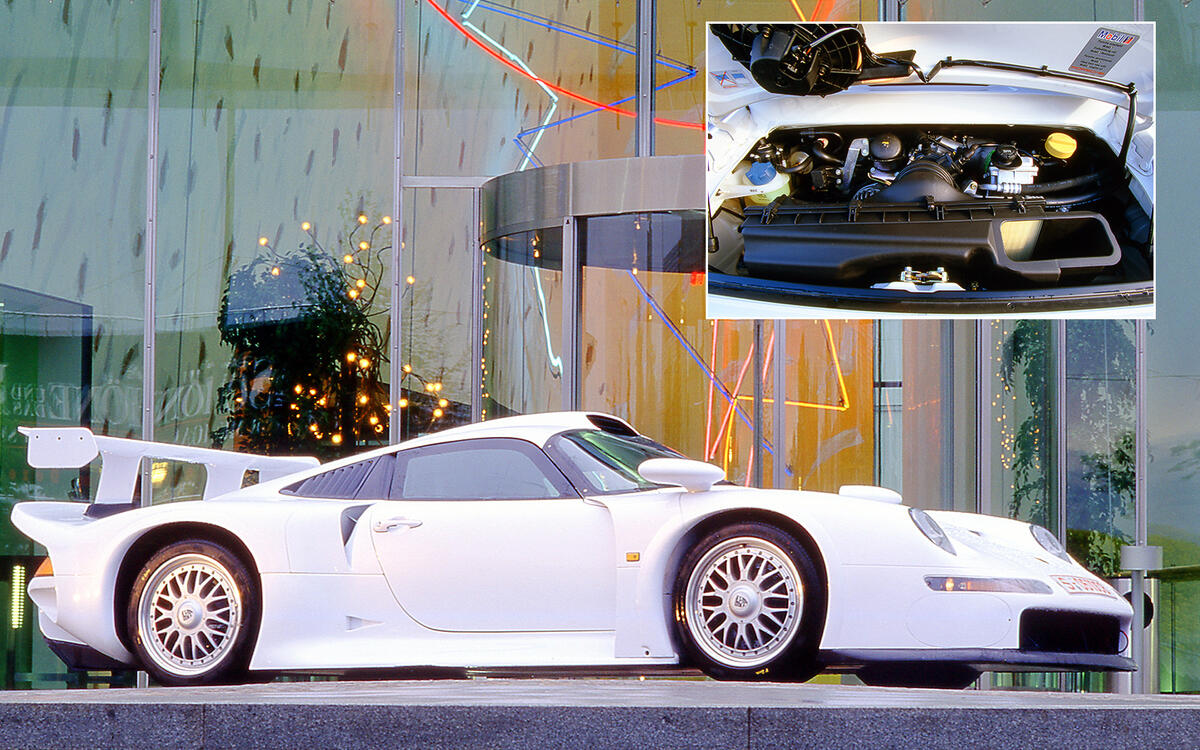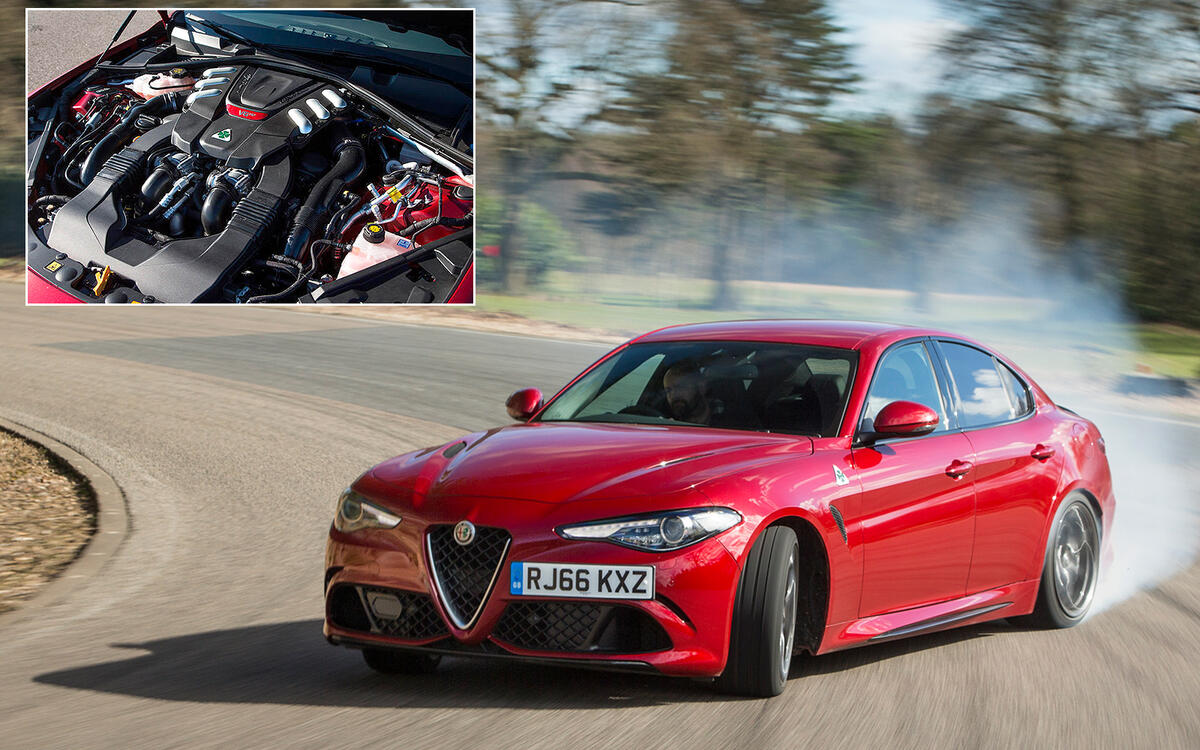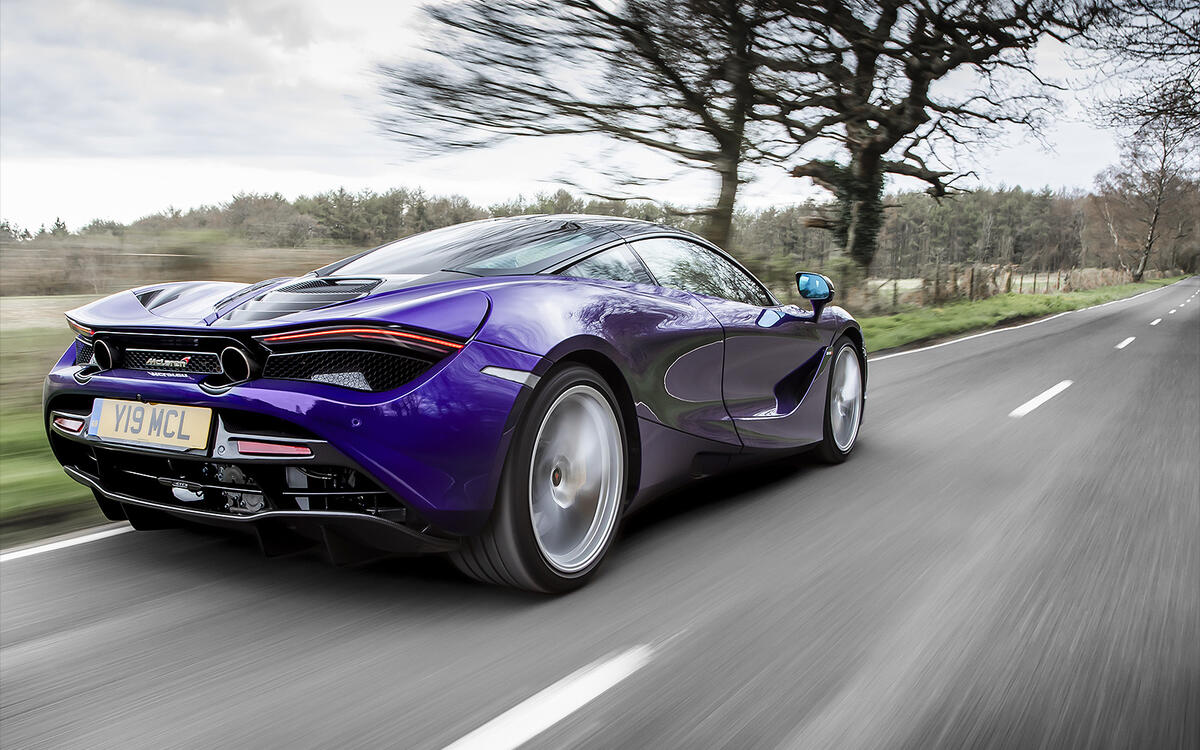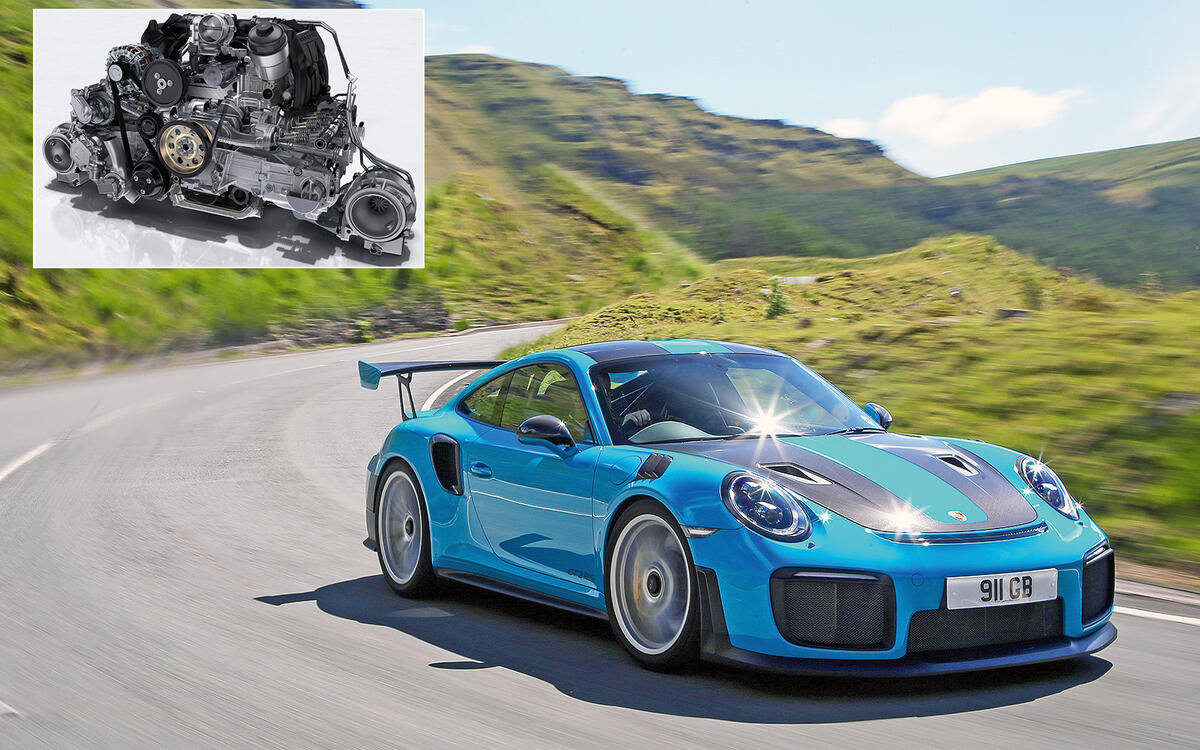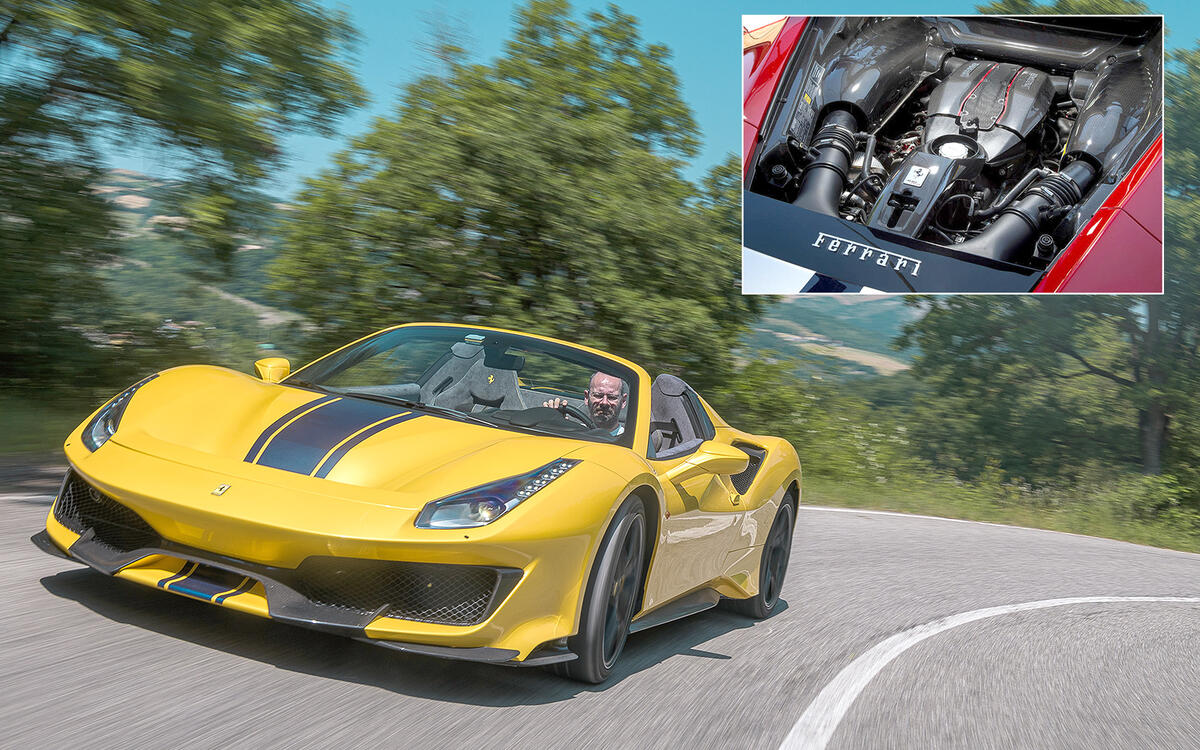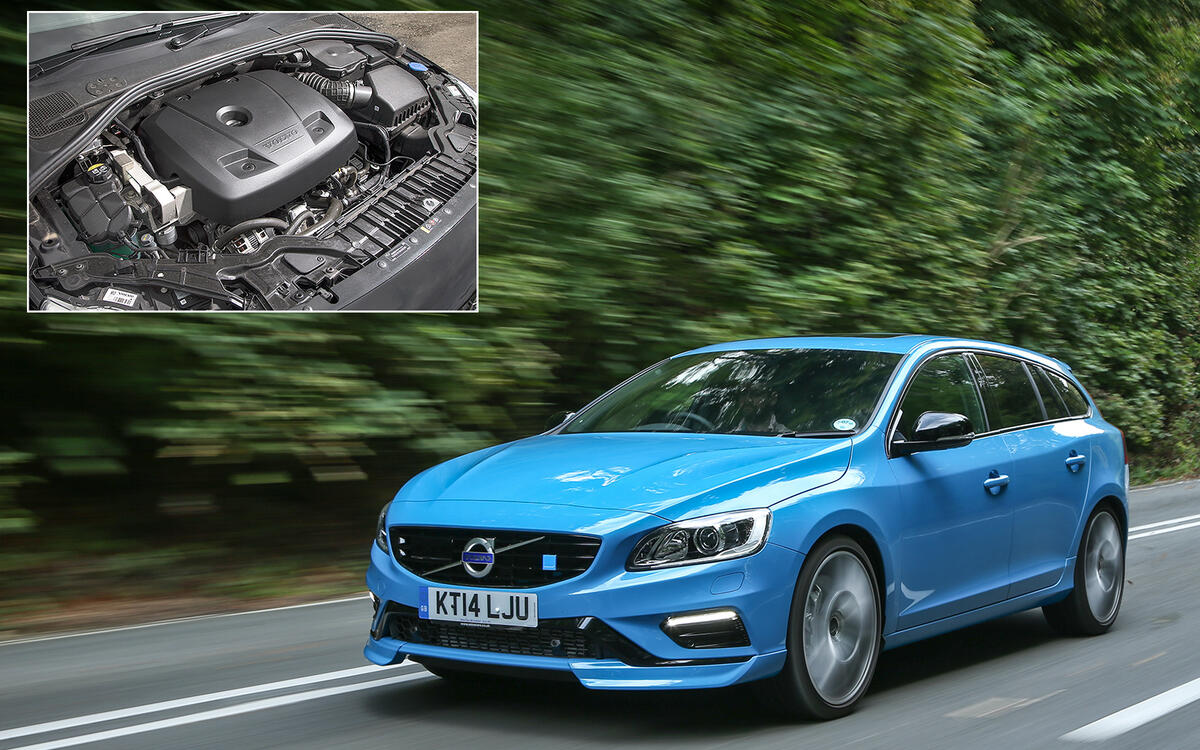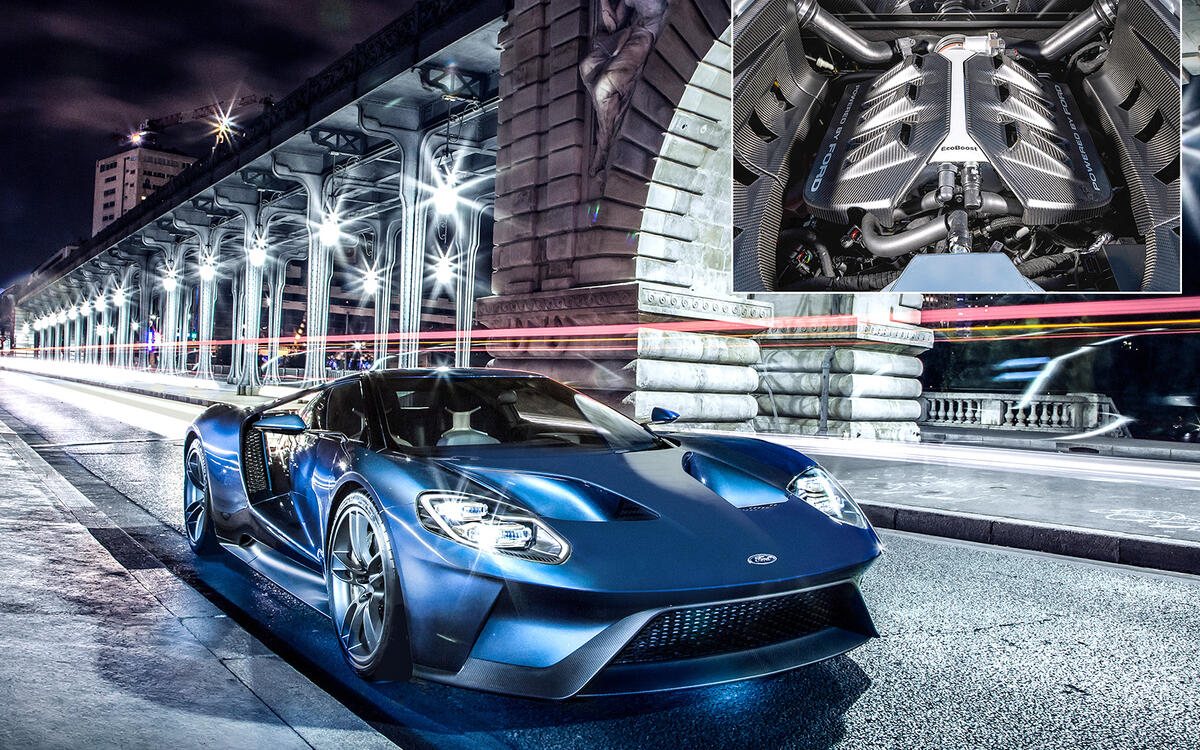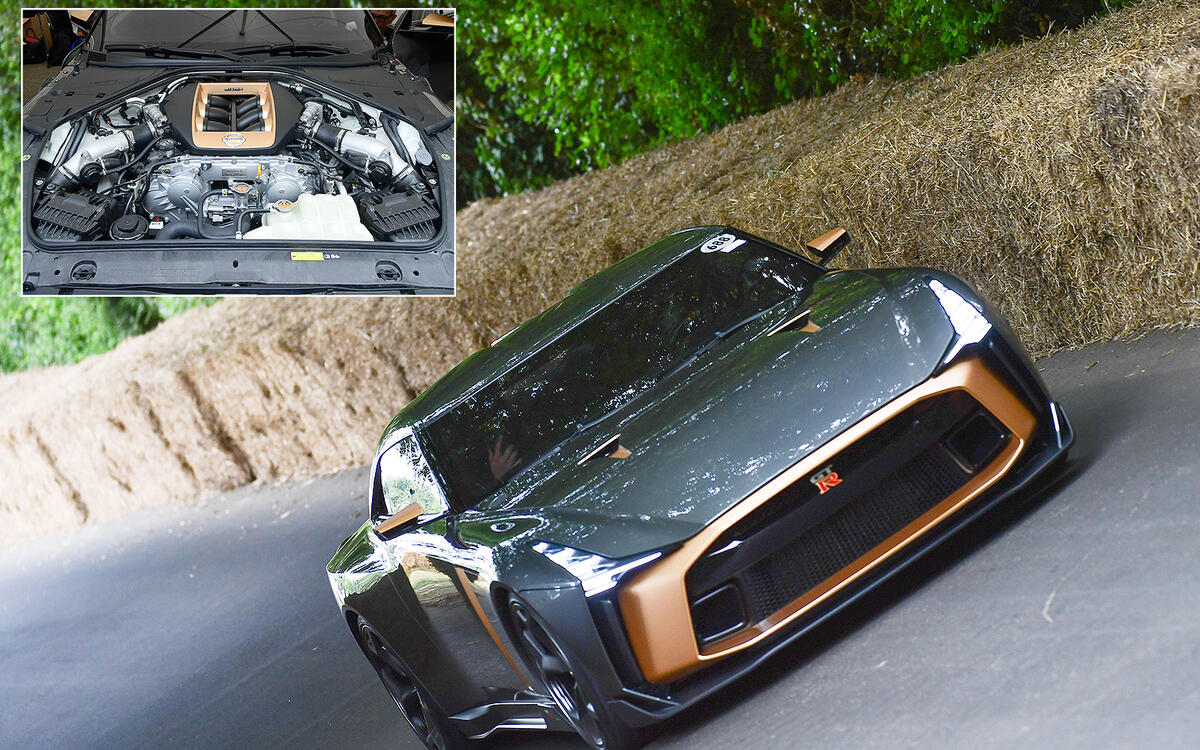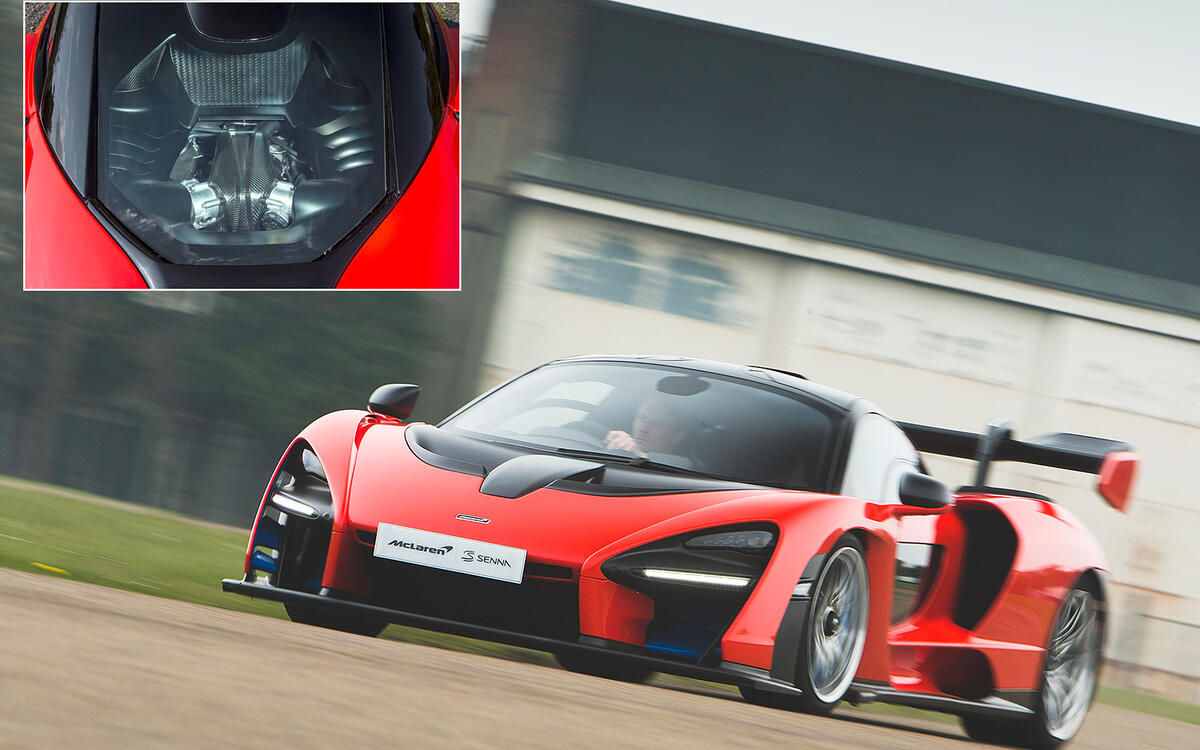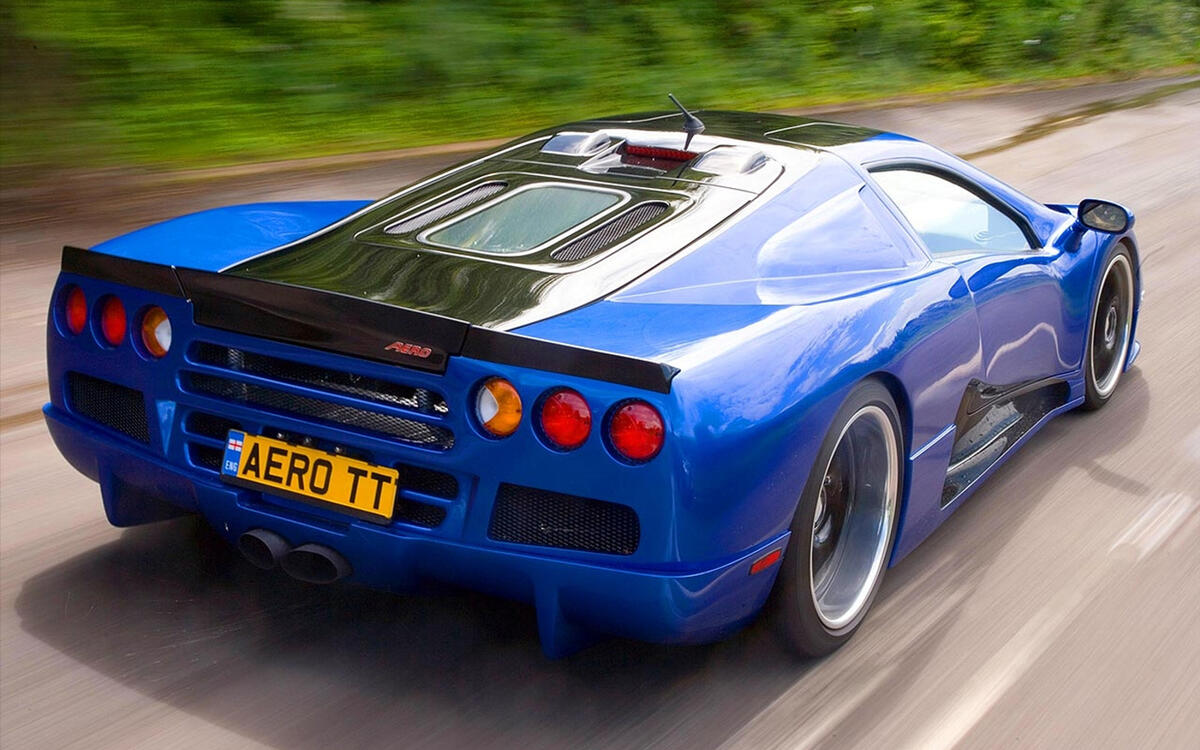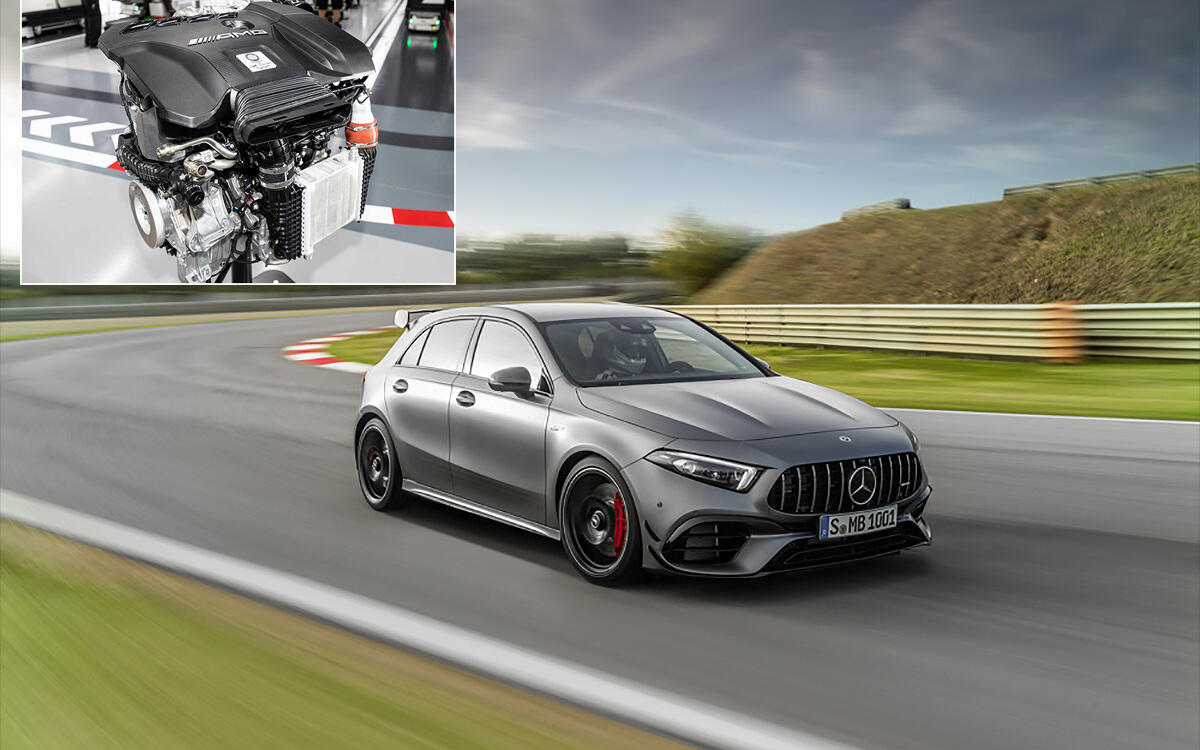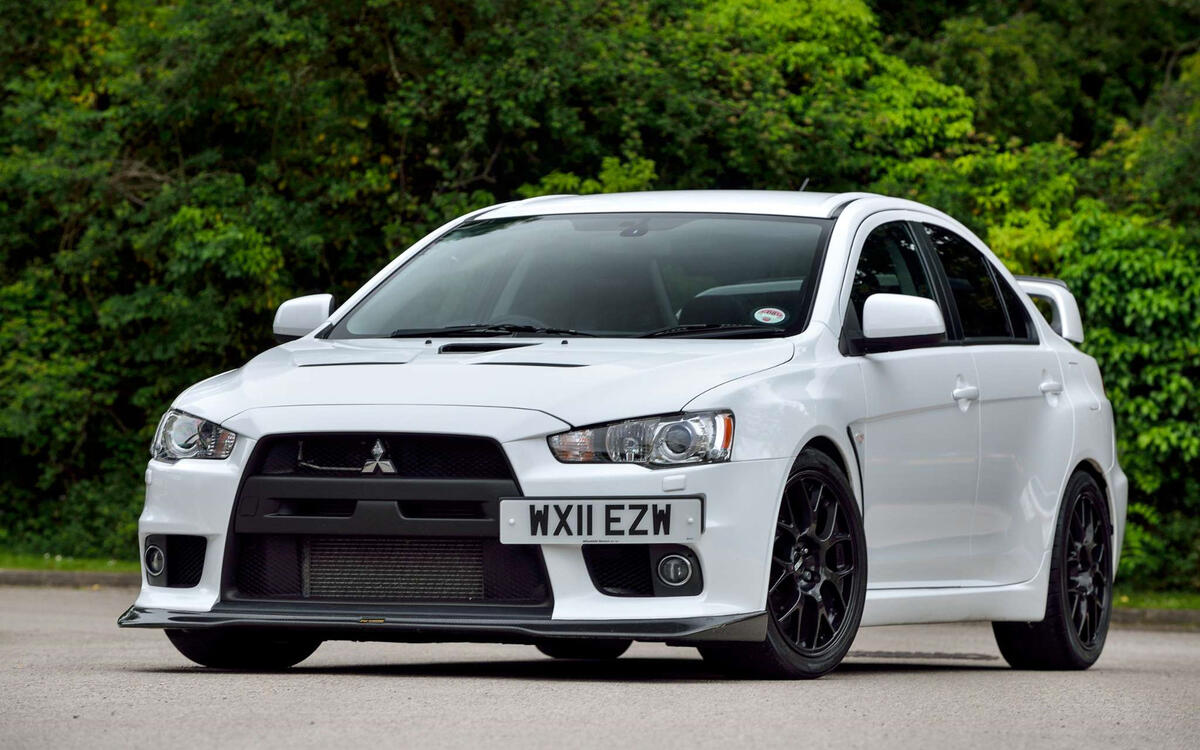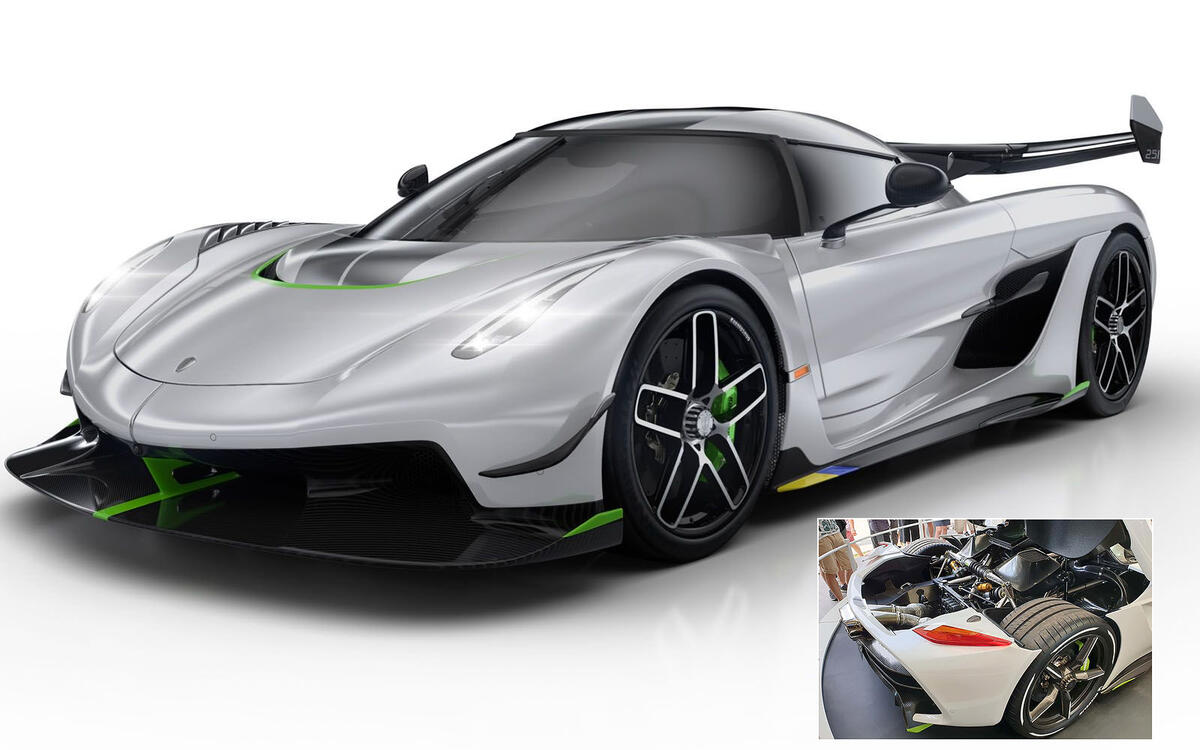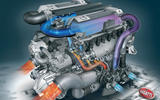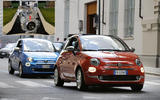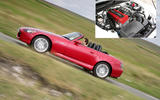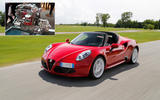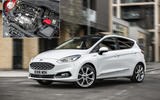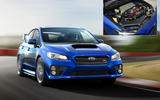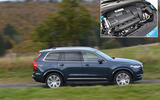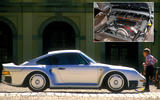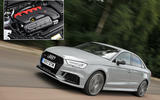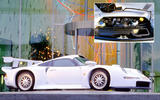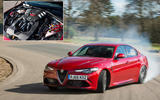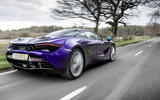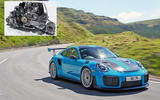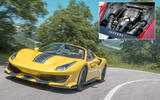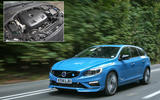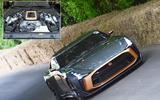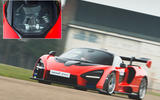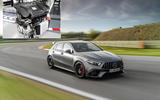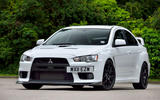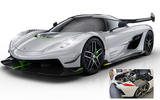 Slide of
Slide of
Very large car engines can have a very high power output fairly easily – but what about when the engine is very small?
In the past, 100bhp-per-litre was the sort of figure you might expect from a high performance sports car. Standard family cars never came near it, and would have been unacceptably difficult to drive if they did.
It’s still unusual now, but thanks to technical developments in general and turbocharging in particular it's far from uncommon, even in everyday models. Here is a list of 25 cars which exceed 100bhp/litre anything from comfortably to extravagantly. Some are exotic and expensive, while others are part of the automotive furniture – indeed there’s a fair chance you might even own one yourself.
We include a quote from our review of the car and its engine at the time:
 Slide of
Slide of
Fiat 500 TwinAir: 118.9bhp/litre
The marvellous little two-cylinder TwinAir engine was the first developed specifically to use Fiat’s ingenious MultiAir technology. In its most powerful form it produces 104bhp from just 875cc. As well as the 500, it is found in the 500L, the Panda, the Punto and the Alfa Romeo MiTo.
What we said:
“On the road, the 500 TwinAir is deeply impressive. Only at idle and under full acceleration are you truly aware of the engine's twin-cylinder format, and even then the noise is gruffly enjoyable and the balancer shaft keeps things four-cylinder smooth.”
 Slide of
Slide of
Honda S2000: 123.7bhp/litre
Honda’s two-seater sports car used a more powerful derivative of the 2.0-litre engine found in several generations of the Civic Type R. The ultimate version was a 1997cc unit producing 247bhp. Without the benefit of turbocharging, peak performance was achieved at a mighty 7500rpm.
What we said:
“The engine is extraordinary… it revs to 9000rpm, and does most of its best work beyond an incredible 7000rpm… Just as important, the Honda works well on the road as a keen driver’s tool too.”
 Slide of
Slide of
Alfa Romeo 4C: 136.1bhp/litre
The 4C’s relatively small 1742cc engine has a maximum power output of 237bhp. The same unit is also used in the Giulietta 1750 TBi Quadrifoglio, but thanks to a much lower kerbweight of just 1000kg (thanks in part to the use of composites for its structure) the 4C is considerably faster.
What we said:
“Performance and flexibility are this powertrain's forte. The exhaust note can be raucous and the combined racket of ignition-cut and wastegate whoop when you change gear is never peaceful, always inspiring. From outside, the car sounds amazing.”
 Slide of
Slide of
Ford Fiesta 1.0 EcoBoost 140PS: 138.1bhp/litre
Ford’s multiple award-winning 999cc three-cylinder engine is available in several forms, the strongest of them producing a robust 138bhp. In general, 1.0-litre EcoBoosts have appeared in Fords as large as the Mondeo, but only the Fiesta and the Focus have been treated with the most powerful version.
What we said:
“The engine’s a willing companion… and gives a mildly satisfying three-cylinder thrum… while fewer bangs per revolution means it sounds like it’s working less hard at a given engine speed.”
 Slide of
Slide of
Subaru WRX STI Diamond Edition: 141.6bhp/litre
Built in tiny numbers for the South African market, the Diamond Edition was the most powerful version of Subaru’s Impreza-based cars ever made available to the public. It produced a heady 348bhp, but since this power came from a 2457cc engine the bhp/litre figure is not much higher than that of the Ford Fiesta Ecoboost.
 Slide of
Slide of
Bugatti Veyron 16.4 Super Sport: 148.1bhp/litre
All Veyrons used the same 7993cc engine, but the Super Sport was the one named fastest production vehicle in the world thanks to a specification which raised the power output to 1184bhp. The Grand Sport Vitesse derivative produced the same amount of power but was slightly heavier and not quite as quick.
What we said:
“When you put your foot down and feel your internal organs squeezed to one side under the sheer g-force, there is also the unique, rather lovely sensation of sitting in your favourite armchair in your favourite lounge while doing so.”
 Slide of
Slide of
Ford Focus RS: 152.6bhp/litre
In standard form, the 2261cc 2.3-litre EcoBoost engine fitted to the third-generation Focus RS hot hatch produces 345bhp. Several upgrade kits are available; one recently developed by Ford tuning experts Mountune raises the output to 510bhp, or an extraordinary 226bhp/litre, though internal modifications are required to maintain reasonable reliability.
What we said:
“For such a hard-working four-cylinder unit, the power delivery is pleasingly flexible and balanced – not at all dominated by turbo boost and surging mid-range torque, but crisp-feeling under your foot and willing to rev out.”
 Slide of
Slide of
Volvo XC90 T6: 155.4bhp/litre
A mighty 306bhp from a 1991cc four-cylinder engine sounds like a hot hatch specification, but it actually applies to Volvo’s XC90 seven-seat MPV in non-hybrid T6 form.
With ‘Polestar Engineered Optimisation’ the output has been as high as 325bhp, which equates to a sturdy 163bhp/litre. The T6 also appears in the XC60 SUV and V90 estate.
 Slide of
Slide of
Porsche 959: 155.8bhp/litre
The 959 road car was built in the small numbers necessary to allow Porsche to compete in international motorsport (such as the 1984 and 1986 Paris-Dakar rallies, which it won in the hands of René Metge). The fastest production car of its day, it had a 2849cc engine capable of 444bhp.
What we said:
“It’s a 2.85-litre motor when the 911 of its day had a 3.2-litre engine and has turbochargers working not in parallel but series: one little turbo to spool up fast and minimise low-rev lethargy handing over to another far bigger turbo once the revs were up. Not only that, but it came with watercooled, twin-cam heads with four valves per cylinder.”
 Slide of
Slide of
Honda Civic Type R: 158.3bhp/litre
Civic Type Rs relied on high-revving naturally-aspirated engines until 2015, when Honda switched to turbocharging. Engine speeds went down and power outputs increased dramatically, giving the later cars a quite different character. The engine in today’s Type R is a 1996cc unit producing a maximum of 316bhp.
What we said:
“Anybody who anticipates a shortage of character and levity brought about by forced induction is in for a pleasant surprise. Honda has done a remarkable job to deliver an effervescent engine that rises to the occasion with every foray towards the 7200rpm redline.”
 Slide of
Slide of
Audi RS3: 159.3bhp/litre
Audi’s contribution to the current hot hatch arms race is the RS3, whose turbocharged 2480cc five-cylinder engine produces a mighty 395bhp. The same engine can also be found in the TT RS which, being lighter and more aerodynamic, is even quicker, with a 0-62mph time of under four seconds.
What we said:
"This engine is magnificent – too good, probably, to be considered appropriate for a car like this by almost any other manufacturer. And, being teamed with an equally brilliant driveline and launch control system, it makes for the kind of performance that’d be more recognisable to an owner of a supercar of, say, 10 years of age or so, than it would be to most hot hatchback regulars.”
 Slide of
Slide of
Porsche 911 GT1: 169.4bhp/litre
Like the 959, the 911 GT1 was built as a road car only to allow Porsche to compete in international motorsport, in this case the GT1 race class. Although the 3164cc twin-turbo six-cylinder engine was detuned for the Strassenversion, it still produced 536bhp, enough for a 3.9-second 0-62mph time and a top speed of over 190mph.
What we said:
“Just 25 were built and it began a trend for cars that subverted the mid-1990s GT rules…”
 Slide of
Slide of
Alfa Romeo Giulia Quadrifoglio: 174.0bhp/litre
The Quadrifoglio is the most powerful car in the Giulia range by over 80%. Its 2891cc six-cylinder engine is in a different league from the more widely available petrol and diesel four-cylinders, producing 503bhp. No other current Alfa has a bhp/litre figure that comes close to the one in this car.
What we said:
“Turbo lag becomes negligible once you have 3000rpm or so wound on, and the V6 runs to a soulful 7300rpm, with a noise that’s smoother than that of a [Mercedes] AMG V8 but is more involving than a [BMW] M3’s.”
 Slide of
Slide of
McLaren 720S: 177.8bhp/litre
McLaren divides its road-going range into several series. In the Super Series, the most powerful model is the 720S. Like all other McLarens, this one has a V8 engine, in this case a 3994cc unit producing 710bhp. In terms of absolute power and bhp/litre, it easily beats the 6.0-litre BMW V12-engined F1 of the 1990s.
What we said:
“It’s far from inflexible, but you do need 4000rpm on the tacho before the car really takes off. When it does, it feels sensationally rapid – unexpectedly seamless and smooth but no less dramatic for it, and building savagely as the revs rise towards 8000rpm and beyond.”
 Slide of
Slide of
Porsche 911 GT2 RS: 181.6bhp/litre
In terms of power output, no current 911 comes close to the GT2 RS, latest in a long line of Porsche GT2 models dating back to the early 1990s. The 3800cc six-cylinder engine produces 690bhp, all of it transferred to the road (as in the McLaren 720S) through the rear wheels only.
What we said:
“As much as the engine’s outright potency impresses, the progressiveness of its thrust and its near-perfect throttle response both seem equally remarkable for what’s a very highly stressed engine of significantly oversquare cylinders.”
 Slide of
Slide of
Ferrari 488 Pista: 182.0bhp/litre
The Pista is a version of the Ferrari 488 intended mostly for track use, though unlike some track specials it is road-legal. In addition to lower weight and improved aerodynamics, the modifications include substantial revisions to the 3902cc V8 engine which raise the power output from 661bhp to 710bhp.
What we said:
“The Pista’s V8 isn’t the sort of engine to bludgeon you with a huge tide of boost-heavy torque that suddenly explodes through the middle of the rev range. It is unlike most motors of its kind because it revs so freely and sounds so frenetic, but also because it keeps on pulling violently right the way to the 8000rpm redline, so long after so many modern turbos have begun tailing off.”
 Slide of
Slide of
Volvo V60 Polestar: 183.3bhp/litre
The first Volvo V60 Polestar (and its S60 saloon equivalent) had a 3.0-litre six-cylinder engine. This was replaced in 2016 by a more powerful 362bhp 1969cc four-cylinder, which catapulted the estate car’s bhp/litre figure into Ferrari, Porsche and McLaren territory. The car was not directly replaced when the new V60 generation was launched in 2018.
What we said:
“Despite the supercharger, it’s a little laggy to begin with and doesn’t do much below 2000rpm. You need to add another 1000rpm before it's properly into its stride, after which it builds pace exponentially as the revs climb, with a pleasant rasp at full chat.”
 Slide of
Slide of
Bugatti Chiron: 185.0bhp/litre
Only slightly more powerful for its size than the 2.0-litre used in the Volvo V60 Polestar, the 7993cc quad-turbo W16 in the Bugatti Chiron is four times larger and can produce up to 1479bhp. A modified version with 1578bhp (197.4bhp/litre) will be used in the forthcoming limited-edition Chiron Super Sport 300+ and Centodieci.
A slightly modified version of this car has recently achieved a top speed of 305mph.
What we said:
“There’s lag… before it inhales massively and, about a second after you ask it to, begins to push you along the road, in loping, increasingly urgent strides of noise and blur. It’s not a soulful noise but it’s not unpleasant and it is always overwhelming – like standing next to an express train or hovercraft as it leaves a station or waterside.”
 Slide of
Slide of
Ford GT: 185.1bhp/litre
Ford’s first tribute to its own GT40 was certainly powerful enough, but its 5.4-litre V8 engine barely exceeded 100bhp/litre. The second-generation GT, launched in 2017, is much more impressive in that respect. The 3496cc twin-turbo EcoBoost V6 engine mounted behind the cockpit produces 647bhp.
What we said:
“I like the noise… it’s an honest, effective noise and it comes with minimal lag (in Sport mode, there’s a very effective anti-lag system, too) and an extra kick in the back from 5500rpm to 7000rpm to make it feel as fast as the claimed sub-3.0sec to 60mph and all-in 216mph.”
 Slide of
Slide of
Nissan GT-R50: 186.9bhp/litre
By far the most powerful version of the Nissan GT-R is the GTR-50, developed in association with Italdesign to celebrate 50 years of the GT-R badge. The usual 3799cc V6 engine has been heavily modified to produce a maximum of 710bhp, though independent tuners have achieved much higher figures.
What we said:
“The car drives with the heavy feel typical of its production counterpart. Visibility is understandably challenged due to the roof chop, but it’s not significantly worse than the GT-R you can buy from your local Nissan dealer. We won’t feel out of place saying that the car feels big; almost like a modern American muscle car, at just a fraction under 4.7 metres long.”
 Slide of
Slide of
McLaren Senna: 197.5bhp/litre
Named after three-times F1 World Champion Ayrton Senna (all won while driving with the McLaren team), the McLaren Senna is part of the company’s Ultimate Series. It uses broadly the same 3994cc V8 engine as the 720S but has substantially more power, the maximum output being 79bhp higher, at 789bhp.
What we said:
“The Senna’s V8 is noisy right across its operating range and is the kind of engine that’s at its best when sampled through earplugs – and inside a helmet. It’s very apparently an engine of rigid mountings when working hard at lowish revs, when it buzzes and vibrates unapologetically… Then finally, above 5500rpm, it begins to sound much better as it develops more of a soulful, tuneful eight-cylinder howl.”
 Slide of
Slide of
SSC Ultimate Aero TT: 202.8bhp/litre
The original Ultimate Aero TT held the world speed record for production cars for nearly three years until a Bugatti Veyron Super Sport went faster. The updated SSC had its 6345cc twin-turbo V8 engine modified to produce 1287bhp, 104bhp more than the previous version was capable of.
What we said:
“Press the red button in the overhead roof console and this car’s intentions become overwhelmingly apparent. Something resembling a controlled nuclear explosion takes place as the V8 bursts into life. This start-up extravaganza lasts a couple of seconds before the engine settles into a satisfying burble. Despite massive torque the TT is eager, so it either sets off like a dragster or stalls.”
 Slide of
Slide of
Mercedes-AMG A45: 208.4bhp/litre
As of 2019, the 1991cc turbo engine in the A45 (and the larger CLA 45 and GLA 45) produces a maximum of 415bhp in the S model. It is sometimes referred to as the most powerful 2.0-litre four-cylinder production engine in the world, but as we’ll see this is not quite true.
What we said:
“And then there’s the party piece: genuine AMG levels of shove from a 2.0-litre four-pot. But just as remarkable as the outright speed, perhaps even more so is the way it goes about it. Most heavily turbocharged petrols engines make you wait while the turbo spools before delivering their big slug of torque from low revs. Not so here.”
 Slide of
Slide of
Mitsubishi Evo X FQ-440 MR: 220.2bhp/litre
To celebrate its 40th anniversary in the UK, Mitsubishi’s British arm created the most powerful production Evo ever – 440bhp from 1998cc - in 2014. Only 40 were built, the last of which (pictured above) the company still owns. A still more powerful Evo was displayed in Japan in 2015 but does not seem to have gone into production.
 Slide of
Slide of
Koenigsegg Jesko: 313.6bhp/litre
Koenigsegg’s latest car is also its most powerful. The Jesko is said to be capable of 1262bhp on petrol and 1578bhp on an E85 ethanol/petrol mix. All this power comes from an engine with a relatively small capacity of 5032cc, giving an enormous bhp/litre figure which other manufacturers will find hard to beat.
Throwing displacement at a car engine usually yields more power, but many of these engines are very small – but capable of major specific outputs. Here they are in ranked order
Advertisement

